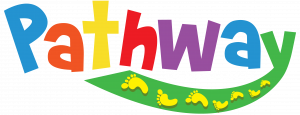“Stroke” is an injury to the brain or the blood vessels in the brain. If a blood vessel is blocked, it can’t deliver oxygen or nutrients to the brain.
Unlike other parts of the body, the brain cannot survive for long without blood flow – if an area of the brain runs out of oxygen or energy, it can become injured or even die.
This is an “ischemic stroke.” A “venous sinus thrombosis” happens when a blood clot forms in one of the veins in the head. Another type is a “hemorrhagic stroke,” which is bleeding inside the head.
Stroke is an emergency—if you think your child is having a stroke, call 911!
Children have strokes?
Strokes are less common in babies and kids than in adults, but they do happen! Babies have a higher risk than children or teenagers.
What causes a stroke in children?
Children have strokes for different reasons than adults. Premature babies may have brain bleeds because their blood vessels are very fragile. Babies have blood that clots more easily than older kids, which can cause stroke in the weeks around birth.
Blood diseases, like sickle cell or hemophilia, can also cause stroke. Genetic diseases that affect the blood vessels or the blood can cause stroke in kids of any age. Other children might have a stroke after injuries to the head or neck if they damage the blood vessels inside. Rarely, infections can create narrowing of the blood vessels in the brain and cause a stroke. Children with heart problems are also at risk.
What are common symptoms of stroke?
Sometimes, it is hard to tell if a child is having a stroke because babies and younger kids can’t always tell us what’s happening.
In infants:
- seizures that keep happening in one part of the body
- sleepiness that is so severe that a baby won’t wake up to feed normally
- weakness or stiffness on one side of the body or in one arm or leg. One sign can be a hand preference before your baby turns one. Other children may have developmental delays.
In children:
- sudden weakness on one side of the face and body, or not using one side of the body normally
- falling to one side repeatedly
- new difficulty talking – slurred speech (“like they are drunk”), no words coming out, or words that do not make sense
- loss of feeling in one side of the body or face
- vertigo (“feeling like the room is spinning or moving”) with balance problems and difficulty walking or double vision
- sudden, very bad headache that is different from your child’s normal headaches
How is stroke diagnosed?
If you think a child is having a stroke, call 911 or go to your nearest emergency department.
A doctor will talk to you and examine your child. Depending on what they see, your child may have some of these tests:
- pictures of your child’s brain and of the blood vessels in the head and neck with a CT or an MRI scan
- heart tests including an EKG or an ultrasound picture of the heart (an “echocardiogram”) to see how well it is working
- blood tests to look for bleeding or clotting problems, infections, or blood conditions
How is stroke treated?
In some cases, emergency treatment may be possible to stop the stroke from getting worse if a diagnosis is made within the first hours after a stroke starts. If your child had an ischemic stroke or a venous thrombosis, doctors may use aspirin or blood thinners to prevent it from getting worse or happening again. For children with brain bleeds, a neurosurgeon will work closely with your doctor to help take care of your child.
How does my child recover from a stroke?
The most important treatments for children with strokes are time and physical, occupational or speech therapy. Even though the brain does not heal as easily or as completely as other parts of the body, children’s brains can often adapt to their injuries. Through physical, speech, and occupational therapy, many kids can continue to improve for 6 or even 12 months after their stroke. Your child’s doctor and therapists will work with you to make a plan for how to best help her recover.
Can this happen again?
Overall, the risk for another stroke in childhood is low. All of us are at risk for stroke as we age, so it is important for you and your child to avoid things that increase the risk of stroke in adulthood, like high blood pressure, cholesterol, diabetes, and smoking.
